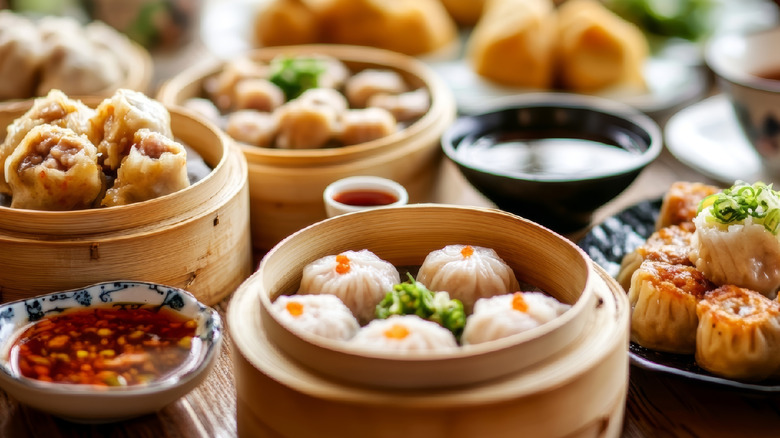Know The Difference Between Cantonese And Sichuan Food Before You Order Chinese Takeout
Chinese regional cooking can actually be classified to include 63 different types, although the "big eight" that receive the most attention are Anhui, Fujian, Hunan, Jiangsu, Shandong, Zhejiang, Cantonese, and Sichuan. In the U.S., however, most restaurants specialize in either of the latter two. And, according to Matt Chan, executive chef at Hakkasan Miami at the Fontainebleau hotel in Miami Beach, these two styles are very distinct.
As Chan described it, "Cantonese cuisine is best known for its balanced flavors, freshness, and bright presentation. It highlights the natural flavors of the ingredients without overwhelming them with too much intensity." While he noted that there isn't much sauce used in Cantonese cooking, thanks to its focus on fresh ingredients and polished presentation, he did mention one condiment called XO sauce (a blend of dried chiles, scallops, and shrimp) that features pretty prominently. He said, "It delivers an intense umami punch that elevates everything from seafood to noodles." Cantonese cooking also makes use of a technique called "wok hei," which means "the breath of a wok" and can be used to make the perfect fried rice.
Sichuan (which some restaurants may spell as Szechuan), on the other hand, is an entirely different experience. Chan explained, "Sichuan cuisine in the U.S. stands out for its málà flavors — both numbing and spicy, full of aroma." In addition to the signature Sichuan flavor — which is packed with mouth-numbing Sichuan peppers — this cuisine may also include both sweet and sour notes, as well. As Chan characterized it, "Sichuan cuisine is bold, spicy, and thrilling."
These famous dishes exemplify the two cuisines
Cantonese in origin, dim sum offers several popular dishes that represent this refined style of cuisine. Matt Chan pointed out dumplings made with chives and chicken or shrimp, scallop siu mai (open-faced wontons), and har gow (steamed shrimp dumplings). Chinese barbecue pork char siu is also Cantonese; as is stir-fried beef tenderloin with black pepper sauce, which Chan called "a dish that highlights wok mastery by balancing bold, peppery heat with the tenderness of premium beef."
As for Sichuan cooking, Chan told us, "Dishes like mapo tofu, kung pao chicken, and twice-cooked pork are classic examples. Hot pots and dry pots have recently become popular too, showcasing not just the flavors but the lively, shared dining experience." Dan dan noodles — the dish so nice they named it twice — also comes from the Sichuan Province.
Chan doesn't favor one of these cuisines over the other. But when you're faced with deciding between the two, he advised, "The choice really depends on your mood. Choose Cantonese for something delicate and elegant, or Sichuan for bold and exciting flavors."

